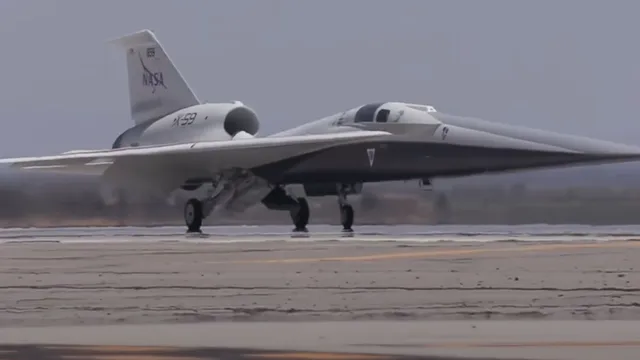- By Sakshi Srivastava
- Thu, 24 Jul 2025 12:41 PM (IST)
- Source:JND
In a major milestone for the future of air travel, NASA’s experimental supersonic jet, the X-59, has successfully completed its first low-speed taxi tests. Nicknamed the "son of Concorde," this next-generation aircraft could one day slash flight times between New York and London to just over three hours—without the deafening sonic boom.
Rolling Into the Future
On July 10, the 100-foot-long X-59 glided down a runway at the US Air Force’s Plant 42 in Palmdale, California, moving under its own power for the first time. The aircraft’s low-speed taxi test focused on critical assessments: steering, braking, and control systems.
NASA engineers and flight crews observed the test closely to ensure the aircraft’s stability and handling met safety expectations. The event marks the final stage of ground testing before high-speed taxi trials begin—tests that will take the jet just short of liftoff.
What Makes X-59 Different?
The X-59 is the centerpiece of NASA's Quesst mission, which aims to revive supersonic travel without the noise.Traditional supersonic aircraft like the Concorde were notorious for their loud sonic booms, leading to bans on supersonic flight over land for nearly five decades.
ALSO READS: Is It Possible For Humans To Get Pregnant In Space? Scientists One Step Closer To Finding Out
NASA hopes the X-59’s sleek, needle-nosed design will eliminate this problem by reshaping the shockwaves that form at supersonic speeds, transforming a boom into a gentle "thump." If successful, the aircraft could lead to revised global aviation regulations, allowing commercial supersonic flights over populated areas.
From Dream To Reality
Capable of reaching speeds up to 925 miles per hour, the X-59 could cut the flight time between New York and London in half—down to about 3.5 hours. Imagine sipping coffee in Manhattan and walking past Big Ben before sunset. NASA’s long-term vision is to collect data from test flights and share it with both US and international regulators. This data would help develop new noise thresholds and ultimately allow commercial versions of quiet supersonic aircraft to take to the skies.
Concorde’s Legacy And Limitations
The X-59 follows in the wake of the Concorde, which dazzled the world with supersonic commercial travel in the 1970s. However, the Concorde was plagued by high operating costs, limited capacity, and noise complaints. Its downfall came after a tragic crash in 2000, and it was officially retired in 2003. NASA’s approach is different: build a safer, quieter, and more regulation-friendly aircraft that addresses the very issues that grounded the Concorde for good.
Next Stop: The Sky
With low-speed taxi tests now completed, the X-59 will next undergo high-speed ground runs. If these are successful, the aircraft is set for its first flight later this year—a defining moment in aviation history. While commercial travel on the X-59 is still years away, this could mark the beginning of a new era where supersonic doesn’t have to be deafening. A world where distance no longer defines accessibility—and the globe feels a little smaller.

